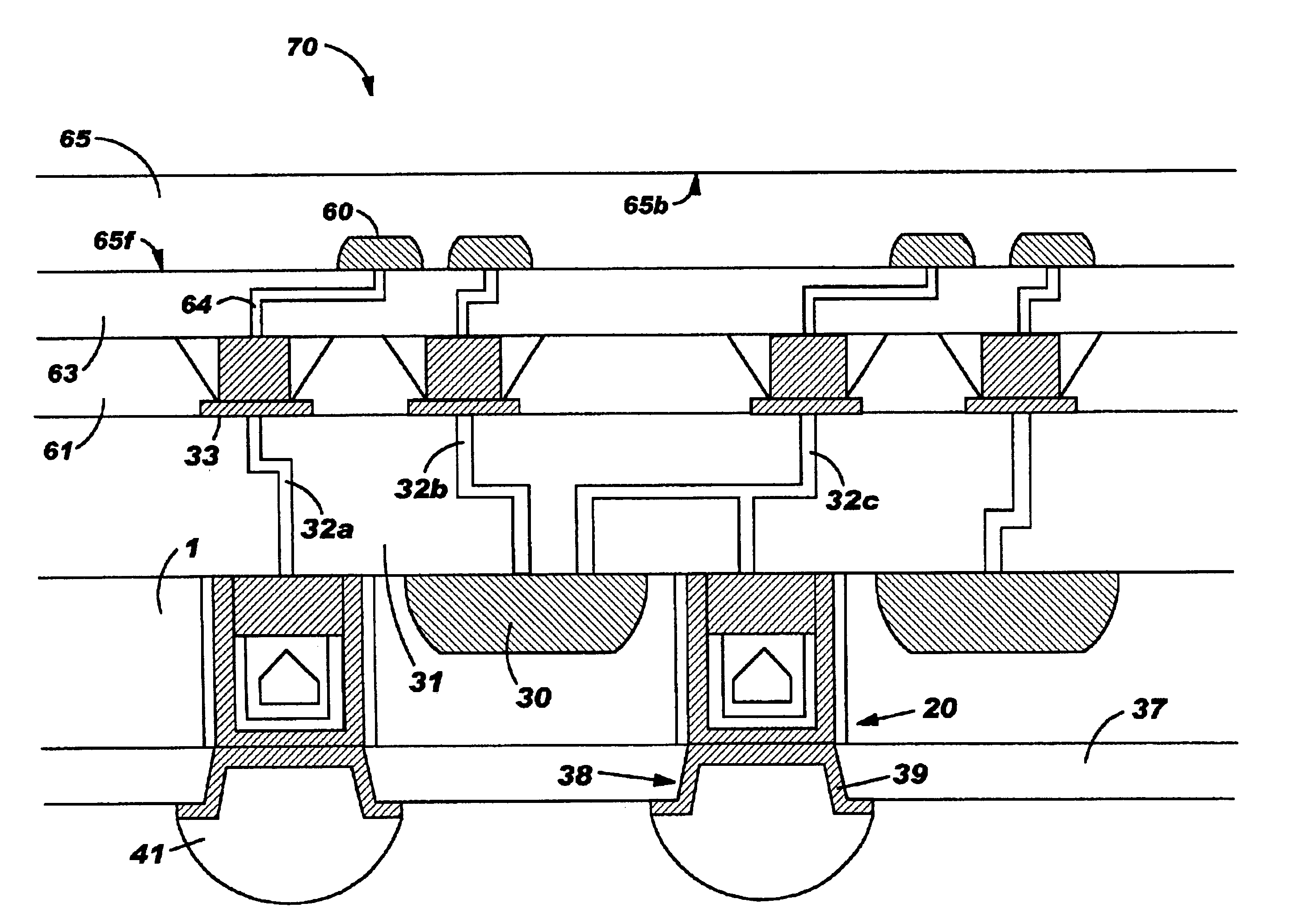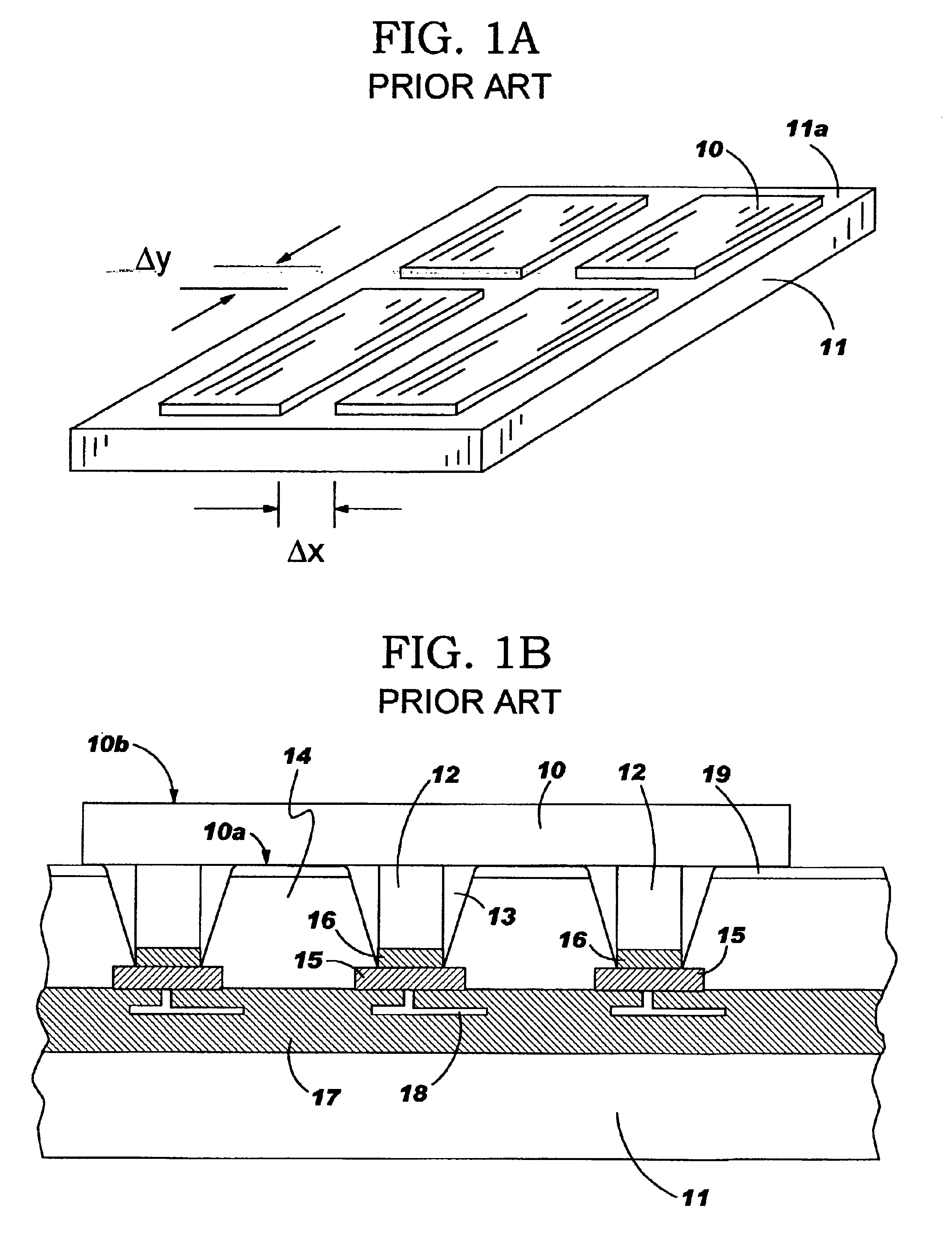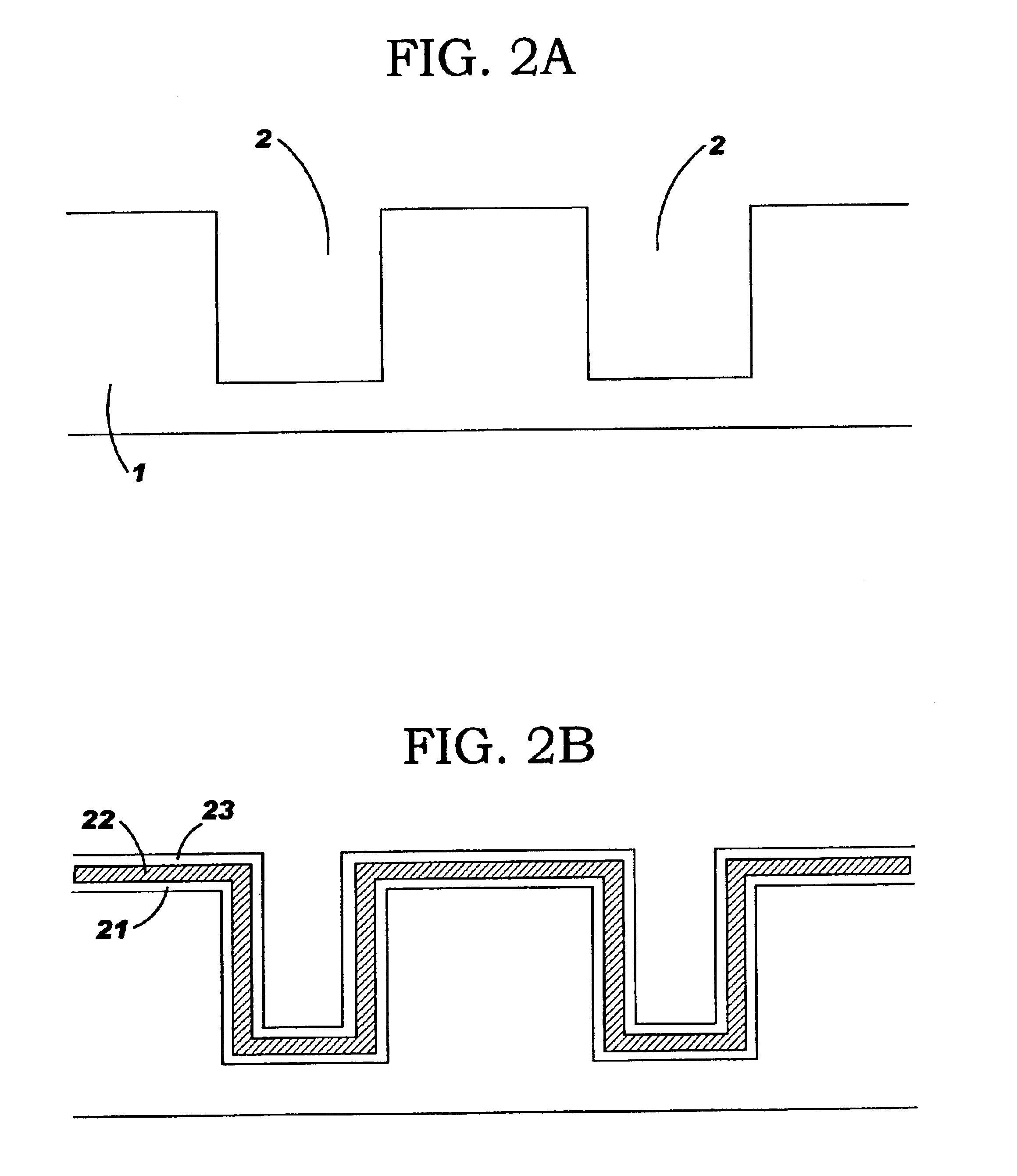Chip and wafer integration process using vertical connections
a vertical connection and integrated circuit technology, applied in the direction of semiconductor devices, electrical devices, semiconductor/solid-state device details, etc., can solve the problems of reducing manufacturing yield, increasing chip size and manufacturing process complexity, and developing larger and more complex chips, so as to achieve high through-via density, high fidelity, and high chip placement accuracy
- Summary
- Abstract
- Description
- Claims
- Application Information
AI Technical Summary
Benefits of technology
Problems solved by technology
Method used
Image
Examples
Embodiment Construction
In accordance with the present invention, a semiconductor device is fabricated which includes vertical electrical connections through a chip. These vertical connections are formed by constructing metallized through-vias in the chip, without the need for expensive deep via etching.
In the embodiments discussed below, two different types of chips are vertically connected. Specifically, in the examples shown, a DRAM chip (or silicon DRAM device wafer) is vertically connected to a plurality of PE chips (or a silicon PE device wafer). It will be appreciated that these types of chips are discussed for purposes of illustration only, and that the present invention may be practiced with a wide variety of chips and wafer types.
Formation of Metallized Vias
A metallized through-via in a semiconductor substrate, such as a silicon wafer, may be formed by depositing metal in a trench and thinning the wafer to open the bottom of the trench, as detailed below.
In a silicon wafer 1, prior to the fabrica...
PUM
 Login to View More
Login to View More Abstract
Description
Claims
Application Information
 Login to View More
Login to View More - R&D
- Intellectual Property
- Life Sciences
- Materials
- Tech Scout
- Unparalleled Data Quality
- Higher Quality Content
- 60% Fewer Hallucinations
Browse by: Latest US Patents, China's latest patents, Technical Efficacy Thesaurus, Application Domain, Technology Topic, Popular Technical Reports.
© 2025 PatSnap. All rights reserved.Legal|Privacy policy|Modern Slavery Act Transparency Statement|Sitemap|About US| Contact US: help@patsnap.com



